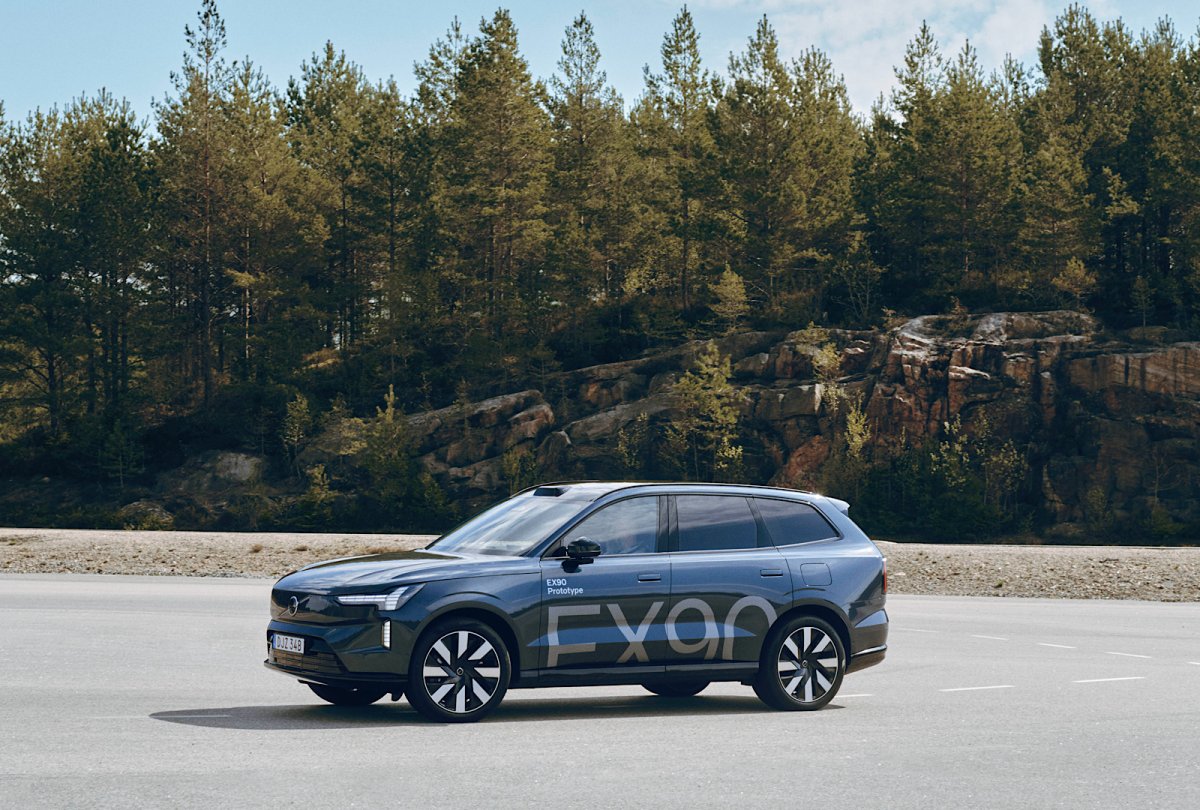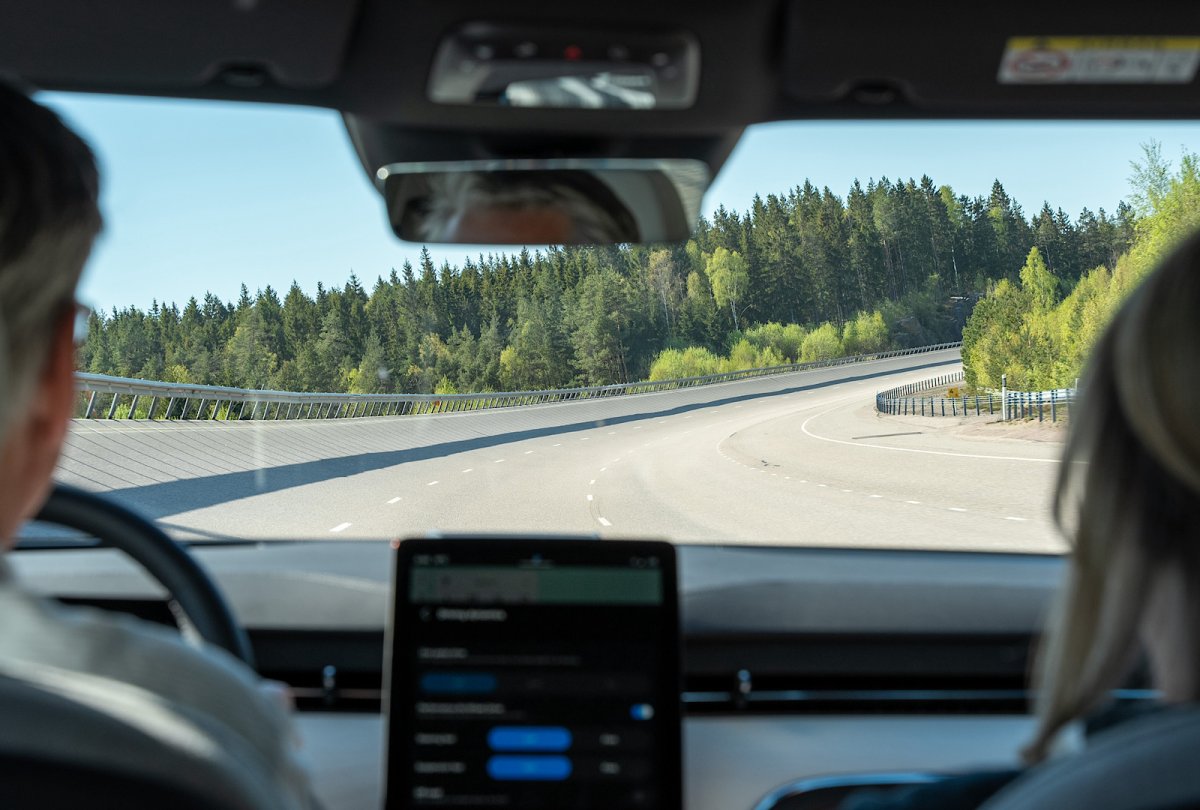One hour east of Gothenburg, Sweden, the sun was shining on another blue sky spring day. The chamber of commerce weather was perfect for the full day of learning about and testing out the 2025 Volvo EX90 at Hällerd Proving Ground.
A small group of Volvo project managers and engineers gave us the lowdown on Volvo’s latest electric vehicle. The EX90 joins the company’s fleet as its flagship this year alongside its gasoline-powered XC90 counterpart. Though they are similar sized, the XC90 is a completely different vehicle.
Volvo knows a thing or two about EVs already. This new effort is one in a line of models that stretches from the 1976 Volvo Electric Prototype that sits in the new World of Volvo brand showcase center, to the C30 electric car from 2010 and into today with the XC40 Recharge and C40 Recharge, both of which were part of my journey across the American West late last year, and the lauded EX30 small SUV.
When the EX90 debuted in November 2022, it was lauded for its funky animated headlights, well-appointed interior, and sleek exterior. Not much has changed since then, including the melanoma-like safety and driver assistance system-related technologies attached at the roofline above the windscreen.
Before we arrived in Sweden, Volvo warned us that we weren’t going to be able to drive the EX90, but that we would be able to experience it riding shotgun on numerous trails and tracks within the testing center.
Among the 17 to choose from, Volvo chose those tracks designated to test for handling, speed and stability, off-road prowess, and comfort as the ride destinations, clearly showing their priorities with the model’s development.
These tracks are not simply smooth paved surfaces. Each has a unique set of tests within it, from duplicating roadways in the U.S., Europe and Scandinavia that present their own set of challenges.
Have you ever ridden over a freeway in Los Angeles? That melodic thump-thump-thump that you could keep time with using a metronome has been replicated at Hällerd as something engineers need to take into consideration as they develop vehicles.
There’s sections of cobblestones, wavy pavement whoops like you’ll find on rural roads worldwide, and steeply banked surfaces with lanes marked so test drivers can track how well a vehicle stays in its lane using a variety of technology, only some of which has been employed in today’s vehicles.

Buckled into the passenger seat, I spent my afternoon riding alongside Kenneth, a capable engineer who explained every bit of the test to me along the way, calling out speeds and the reasoning for each section of testing as it happened.
With the SUV set for comfort, we started at the handling circuit where whoops were hit at a little over 70 kilometers per hour (45-ish miles per hour) and the car’s weight was immediately apparent, despite the suspension doing everything it could to compensate. However, there was little axial movement.
The SUV’s sound deadening and stabilization efforts proved themselves over the cobbles and rougher sections of road but couldn’t do the heavy lifting as we picked up speed and headed into the corners.
There was no escaping the sheer heft of this SUV. That doesn’t mean that it was incompetent or unable to handle the pressure being placed on it by the driver. In fact, it stuck to the roadway with ease and proved quite nimble.
Switching to a sportier drive mode, the SUV’s dynamics tightened up, It was more easily able to turn into the corners at those higher speeds. However, the lack of seat bolstering became apparent at this point. While the SUV may have been tuned for sportier performance, its passengers were still in their comfort setting.
This made me wonder how it will do traversing the many, many roundabouts in Europe.

Moving on to the off-road portion, Volvo’s engineers took the car up a hill and around a short trail to simulate what the SUV would be asked to do as Swedes leave the city and head to their summer cottage for a month, week, or weekend of relaxation. It’s perfectly well suited for that level of off-roading.
On the high-speed loop track, the Volvo did as it was designed to do, rapidly accelerating without passing on many G forces to the passengers, while proving stable and serene as we approached maximum speed and stayed there for a while.
It was also easy to keep in the lane at high speeds, even in steeply banked corners.
If there’s one thing that holds true about Volvos, it is that there’s little that is surprising about them. They’re notoriously good at doing their assigned tasks, especially modern ones.
So, it was unsurprising that nothing about the EX90 test drive surprised me. This Volvo is as competent and competitive as the rest of the Volvo lineup. I look forward to my turn behind the wheel in a few months.
